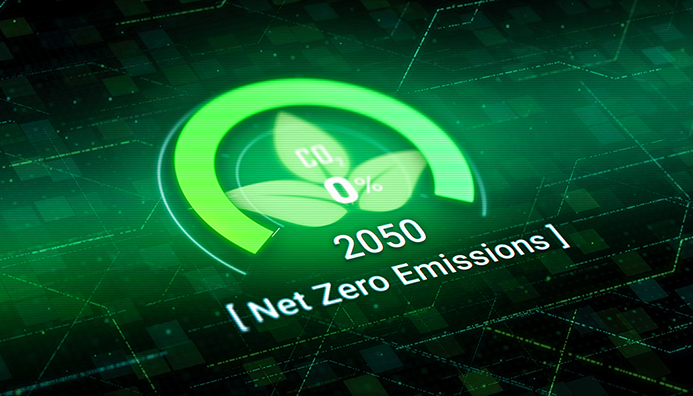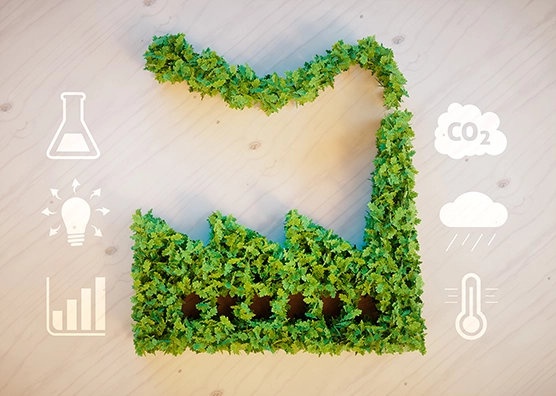- How are data and digital technology going to help foundries and their suppliers tackle these enormous challenges
Nina: We’ve been working with foundries to minimise scrap and energy use for a long time using digital and many other technologies. Digital tools are perfectly suited for tasks like precisely measuring energy consumption and emissions, and monitoring progress towards defined goals. Without a transparent, data-based view of your process, it’s much harder to improve performance.
Norican’s Monitizer | DISCOVER IIoT (Industrial Internet of Things) platform is already helping to improve foundry process efficiency and so reduce energy consumption and emissions. With real-time dashboard views and easy access to a central, trusted database, it embeds the use of data right across production.
- With SBTi’s focus on data, perhaps the old business saying, “you can’t manage what you don’t measure” applies here?
Mike: Yes, “and to measure is to know” too. The great thing about Science-Based Targets is you start by figuring out exactly what’s happening right now. If you want to know what the energy consumption of your machine is, you can find it right there in Monitizer | DISCOVER. If you add another data source that shows the mix of generation sources your electricity supplier uses – and this information is now commonly available – then you can bring those two feeds together in real time. That puts a live KPI in front of you showing how much CO2e (carbon dioxide equivalent) you are emitting at any minute of the day.
Our PRESCRIBE Artificial Intelligence (AI) product runs on the Monitizer | DISCOVER platform which gives it instant access to the right data in the right format. That helps PRESCRIBE work really well in reducing foundry scrap but it’s just as powerful when applied to SBTi to cut excess energy consumption or other types of waste.

- Is this kind of real-time access to emissions data relatively easy for foundries to implement?
Nina: It’s the same sort of “journey to knowledge” that Norican and DataProphet have been supporting foundries on for some years now so they can monitor, control and optimise their process. Foundries traditionally use trial and error based on practical experience because the production process is too big and complex to fully understand and influence, and that makes it very difficult or impossible to find improvements. Everyone in manufacturing has been there.
Then you put in the digital infrastructure – and, yes, it is fairly straightforward – start measuring and monitoring, and data-led change becomes possible. You can start unpicking the complexity of the process and everything gradually becomes simpler. You begin to see where the problems lie and what is really causing them. The same tools and data-led approach work just as well for SBTi and cutting emissions: figure out what your baseline is, pick a goal for reductions and then start to work towards it.
- Once there’s an IIoT system in place, how does adding AI help with emission reduction?
Mike: At the moment, the PRESCRIBE AI helps foundries cut scrap and there have already been some stunning results. You can work on process stability, bring scrap down permanently and so on. The exciting part – and this is where scrap reduction and sustainability overlap – is that foundries need to turn solid metal into liquid. That consumes a truckload of energy.
That energy usually comes from carbon-emitting sources like gas or dirty coal, so it’s not very environmentally friendly. Every kilo of scrap has to be remelted which produces further emissions. The heat goes out into the environment and is completely wasted. In fact, moving all that waste heat out of the casting system after pouring consumes even more energy.
- Can you quantify how much AI-driven scrap reduction helps here?
Mike: A simple calculation shows that, if a foundry produces 100,000 tons of iron castings annually and it takes 740kWh to melt, hold and pour each ton, then cutting scrap from 5% to 2.5% will save around 1,900 tons of CO2e every year. That’s based solely on the electricity saved by remelting less scrap, so it’s pretty conservative.
I emit a certain amount of CO2e – my house, my car and so on. By cutting scrap at one customer for one year, I can offset my personal carbon emissions over my entire lifetime. It shows small AI-driven optimisation changes can have this outsize sustainability impact which is fantastic.
- Where else can AI help us in reducing emissions?
Mike: PRESCRIBE can optimise any kind of defined manufacturing process, whether it’s an automotive assembly line or fishmeal processing. You need to look at the whole system and the energy it consumes and generates. It fits well with the aims of the circular economy where you are trying to minimise energy use, waste and raw material consumption and, instead, maintain, reuse, recycle and so on.
Nina: In a foundry, most energy might go to melting and remelting, but there is still a large component that goes to powering equipment, maintenance, and other activities. There’s a lot of scope there to reduce waste material production and energy consumption. For example, foundries using the green sand process for moulding consume sand, clay and other chemicals and cores. Producing scrap, then remelting and recasting means more of these materials and the associated energy are consumed too.
- Have you already starting applying PRESCRIBE to optimise for sustainable goals?
Mike: During lockdown, we asked ourselves: what are the things that really drive a manufacturing business forward? The first of these is reducing scrap, the second is energy consumption, the third is waste material reduction and the fourth is Overall Equipment Effectiveness where you increase equipment availability and lifespan. We’ve extended PRESCRIBE to optimise for these multiple objectives or value drivers.
Finding the optimal combination of all of these value – and, specifically, sustainability – drivers is what PRESCRIBE is capable of today. It can optimise any kind of foundry and we’re currently working with a foundry to optimise for waste material, excess sand consumption and other drivers as well as scrap.


